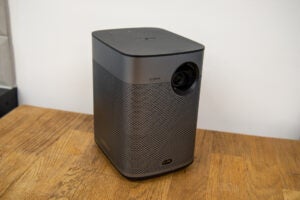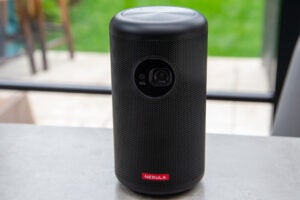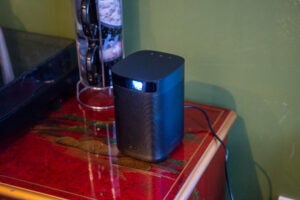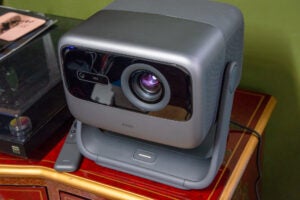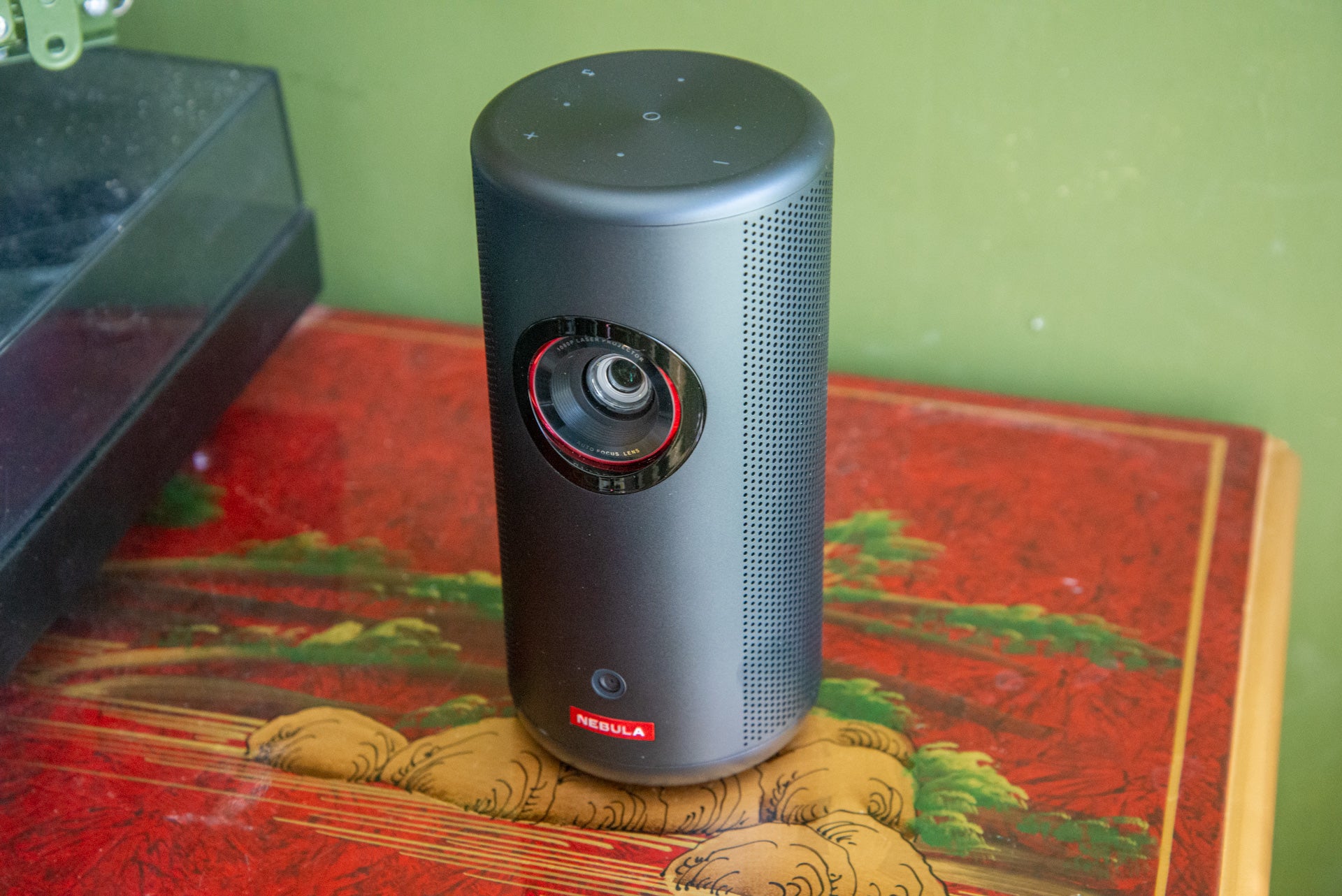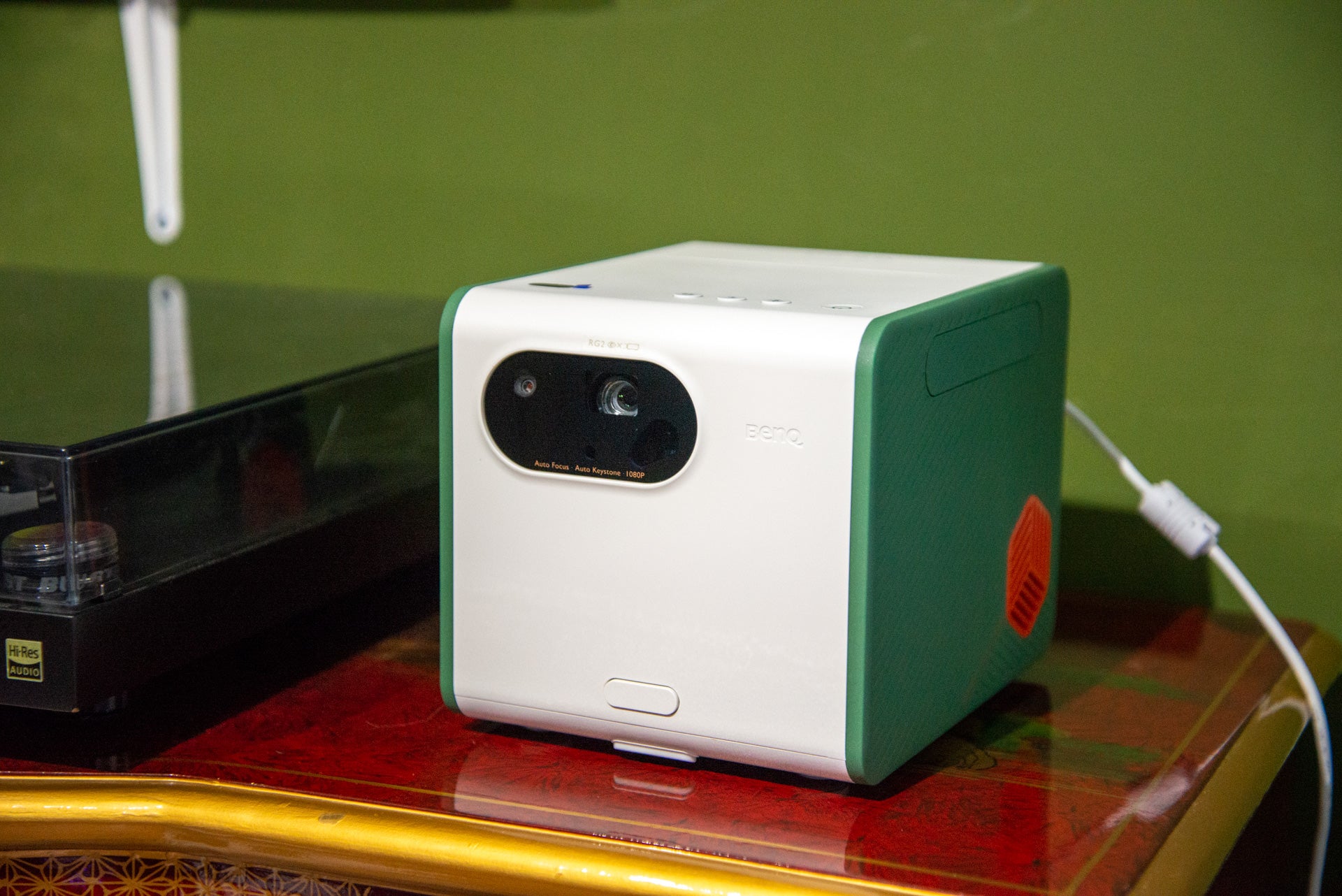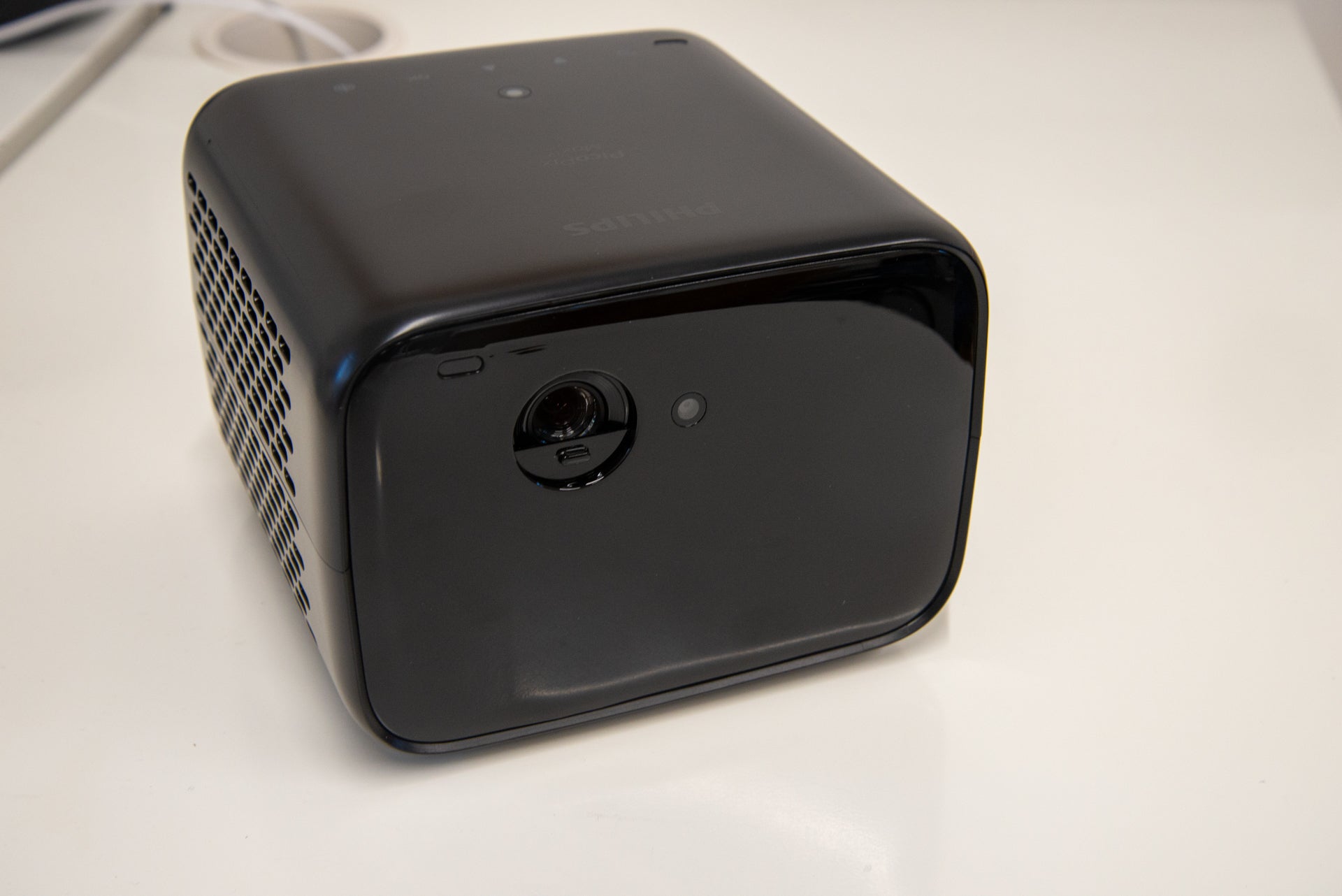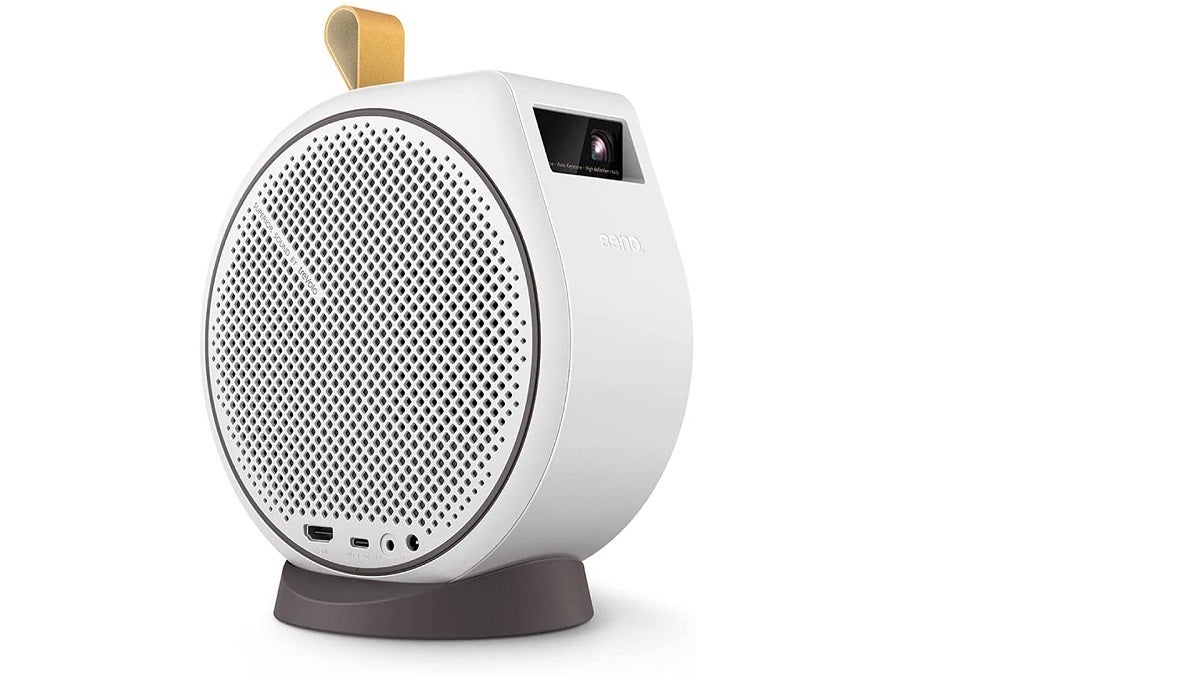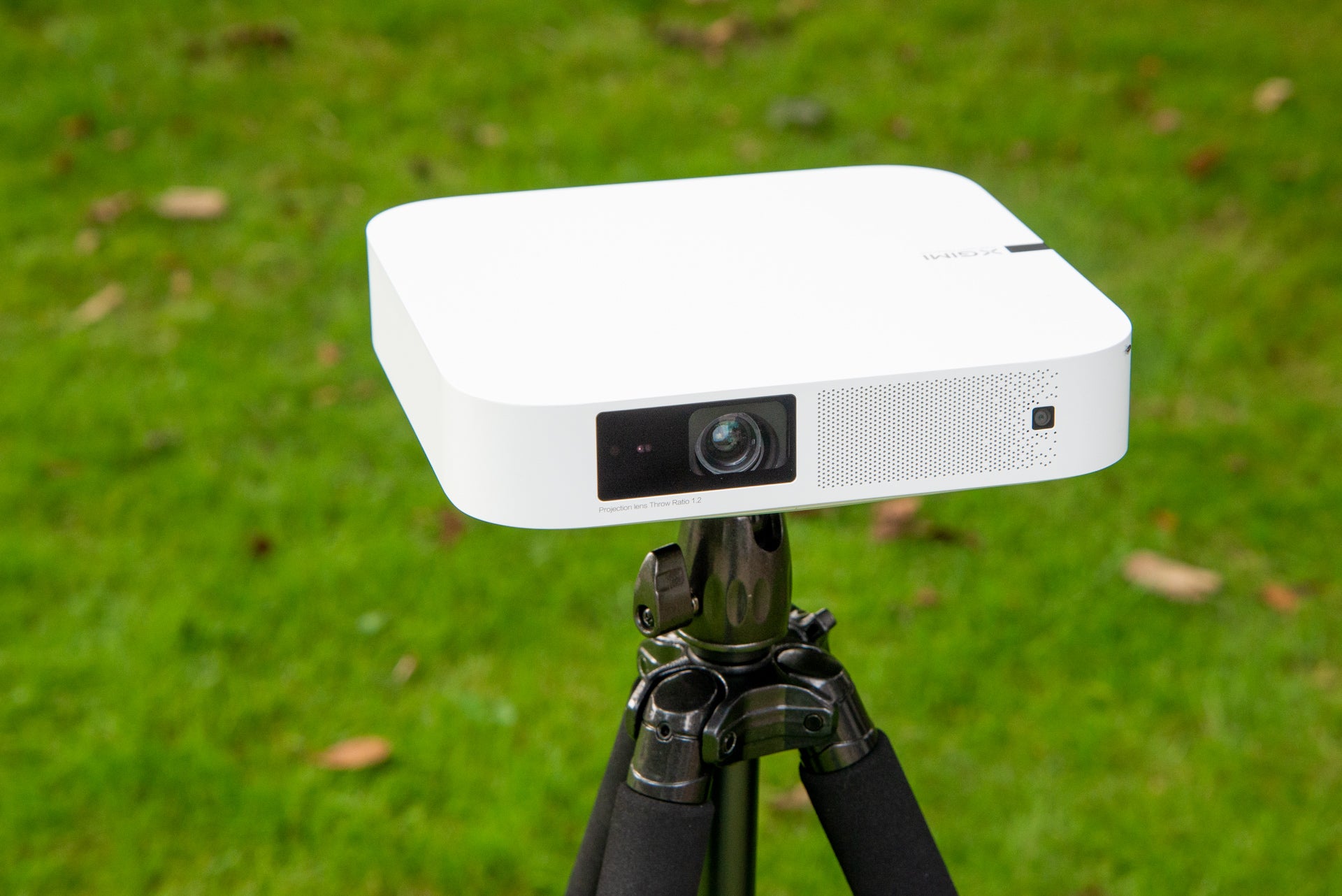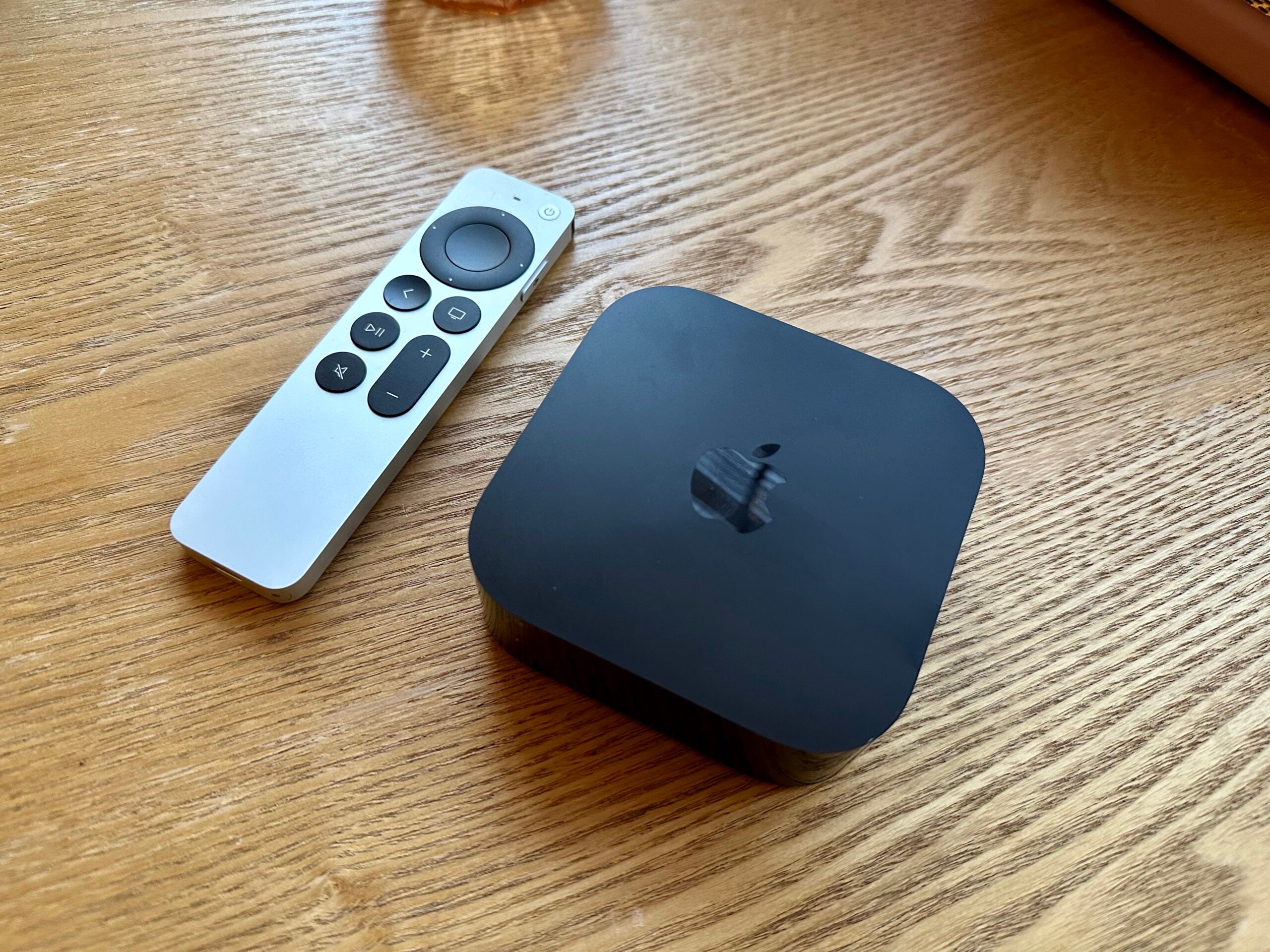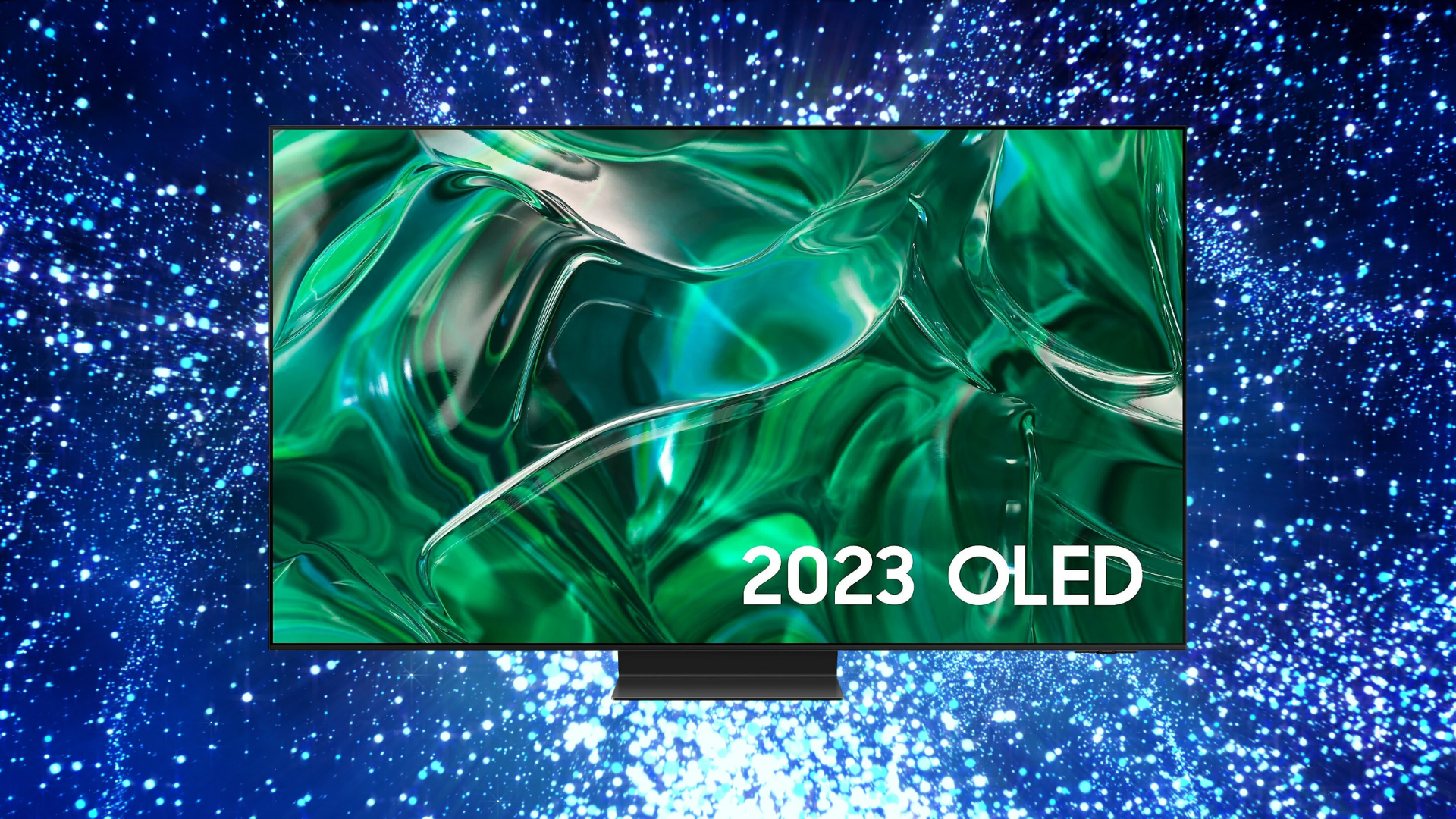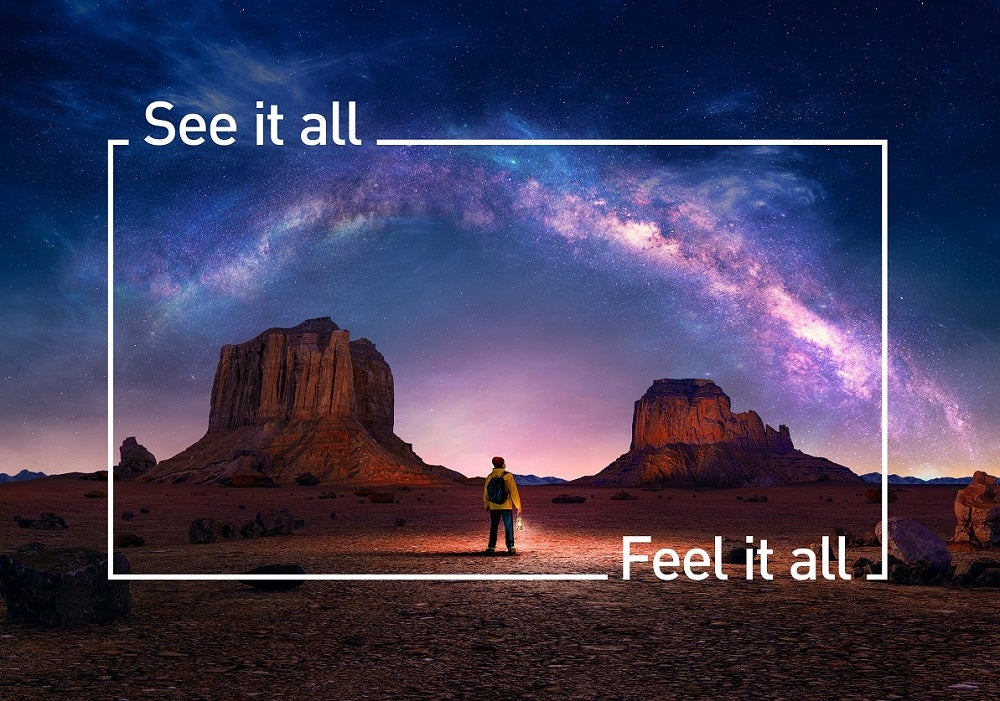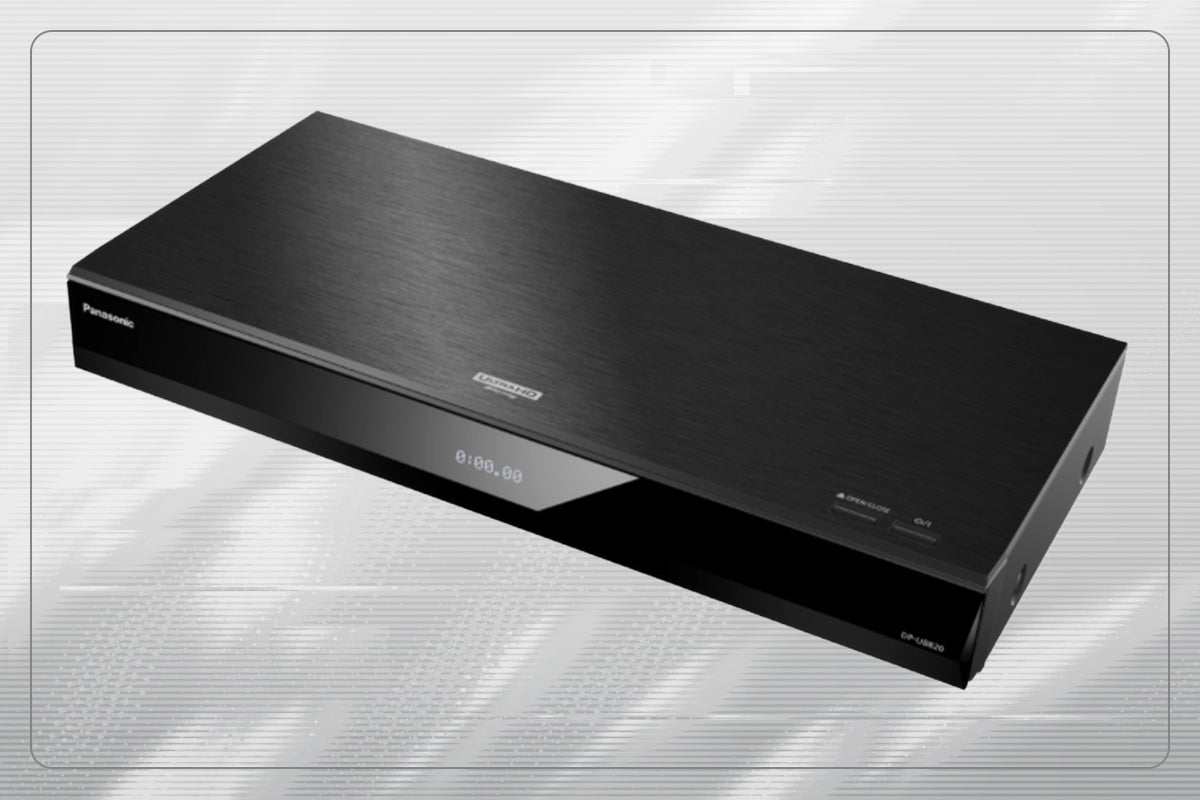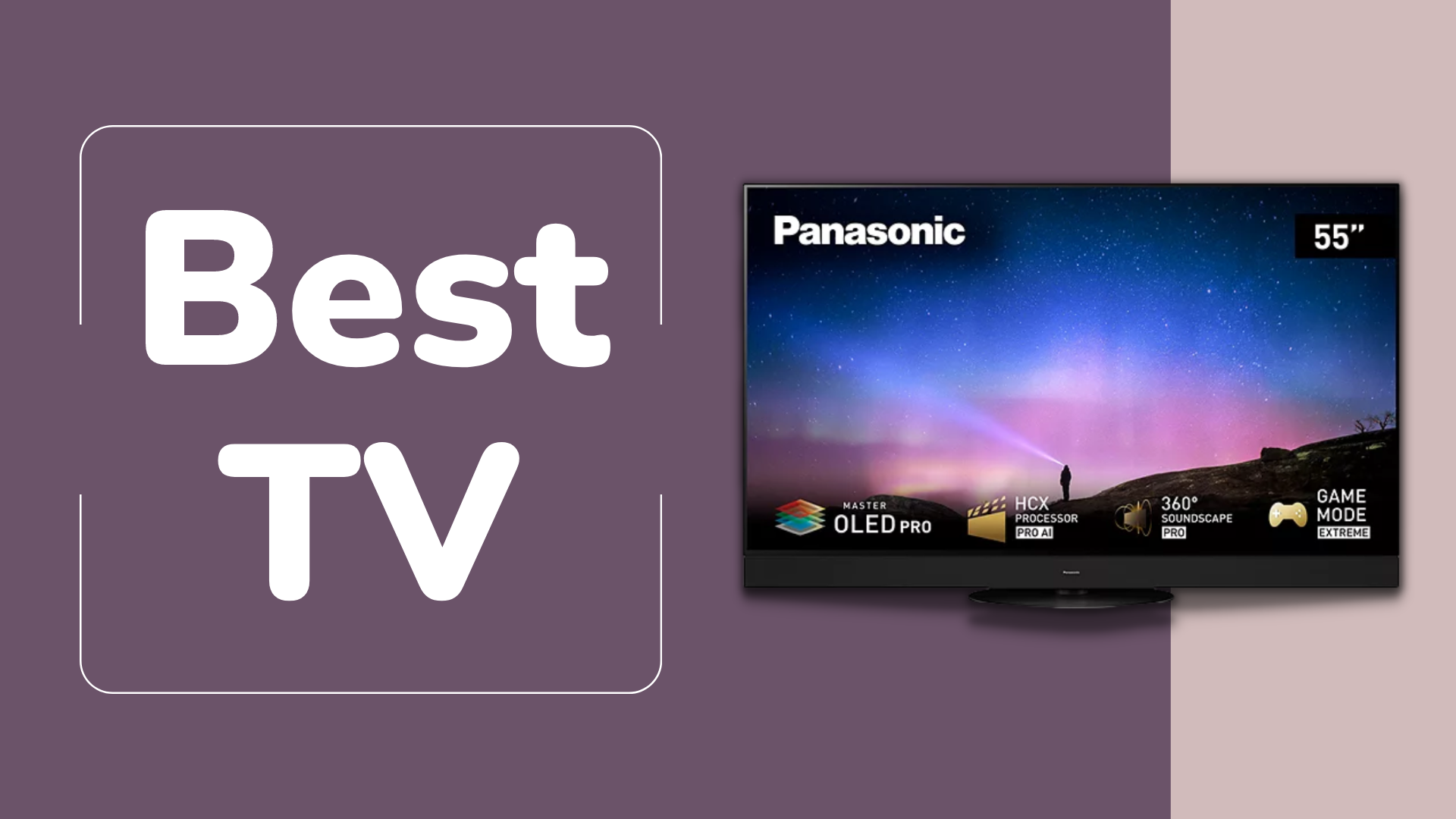Best portable projector: The best pico and handheld projectors
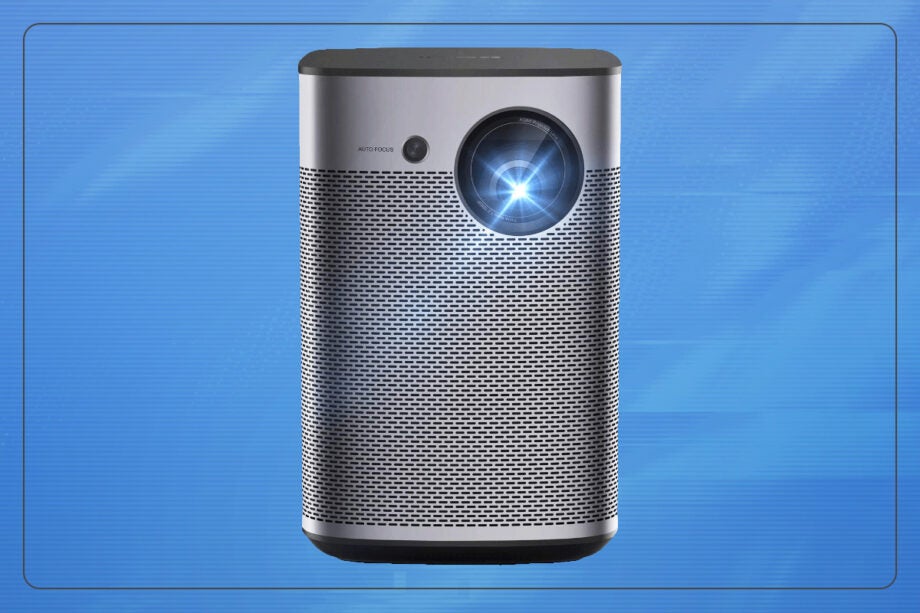
If it’s a cinema experience you want in the home, but you just don’t have enough space for a dedicated installation, then we would recommend a portable projector.
Portable (also known as pico) projectors are compact-sized projectors that offer more flexibility in where they can be laced in a room. They’re great for anyone who isn’t home cinema enthusiasts but still want a viewing experience that’s bigger than a TV and is easy to set up.
So if you fancy having an impromptu cinema night over at a friend’s house, or one for the family, that’s when a portable projector shows its true worth.
And as more pic projectors have flooded the market, that means more options which equals more choice. We’ve reviewed more than a few of them, so we compiled this list to help you find the best portable projector.
Aspects we consider when reviewing pico projectors include portability, build quality, picture and sound, whether they have and smarts as well as the level of connectivity they offer.
We also compare against other similarly priced projectors within the price bracket category to determine models offers the best value. From that process comes the best pico projectors you see on this list.
If you’re new to the world of projectors and aren’t sure what to get, we’ve got a few other best buy lists to help narrow down your options. For more advanced home cinema fans, check out our best projector page with options that range from affordable to premium. for those who want to take their home cinema into the garden, then our best outdoor projectors can cater for that.
Best portable projectors at a glance
- Best portable projector: Samsung Freestyle – check price
- Best premium portable projector: JMGO N1 Ultra – check price
- Best Android portable projector: XGIMI Halo+ – check price
- Best ultra-compact Android projector: XGIMI Mogo Pro+ – check price
- Best portable projector under £500: Anker Nebula Capsule Max – check price
How we test
We test projectors by, well, watching lots of movies on them. But not just movies: we watch sports and TV programmes to get a sense of how they work in terms of motion, sharpness, detail and overall image fidelity.
Depending on the projector, we’ll test them in a bespoke home cinema room or in our own rooms and gardens to see if they live up to the manufacturer’s claims about their performance.
If it’s an HDR projector, we’ll watch plenty of HDR content to determine if colours are correct and whether the projector can do a decent approximation of HDR. If it’s a gaming projector we’ll test the latency to determine how responsive it is.
We’ll also assess the projector in terms of its size and whether it needs a dedicated installation, as well as how much noise it makes during operation and whether that can be a hindrance to watching content. Are they easy to use? And do they require more expert knowledge to operate are considerations we also take into account.
With our reviewers knowledge of previous projectors tested, they’ll be considered to what’s come before to determine whether they offer good value, regardless of how much or how little they cost.
- Easy-to-setup big screen images
- Surprisingly good sound
- Built-in streaming apps
- Limited to Full HD resolution
- Colour gamut could be wider
- Bright
- Clever automatic setup
- Clear image
- Decent audio
- Expensive
- No native Netflix
- HD resolution
- Great build quality
- Good battery life
- Nice app
- Android built-in
- Not very bright
- No Google Play Store
- No lens protector
- Very small
- Decent audio
- Clever auto setup
- Not that bright
- Built-in Netflix client doesn’t work
- Extremely bright
- Excellent image quality
- Flexible stand
- Stand doesn’t have a tripod mount
- No native Netflix
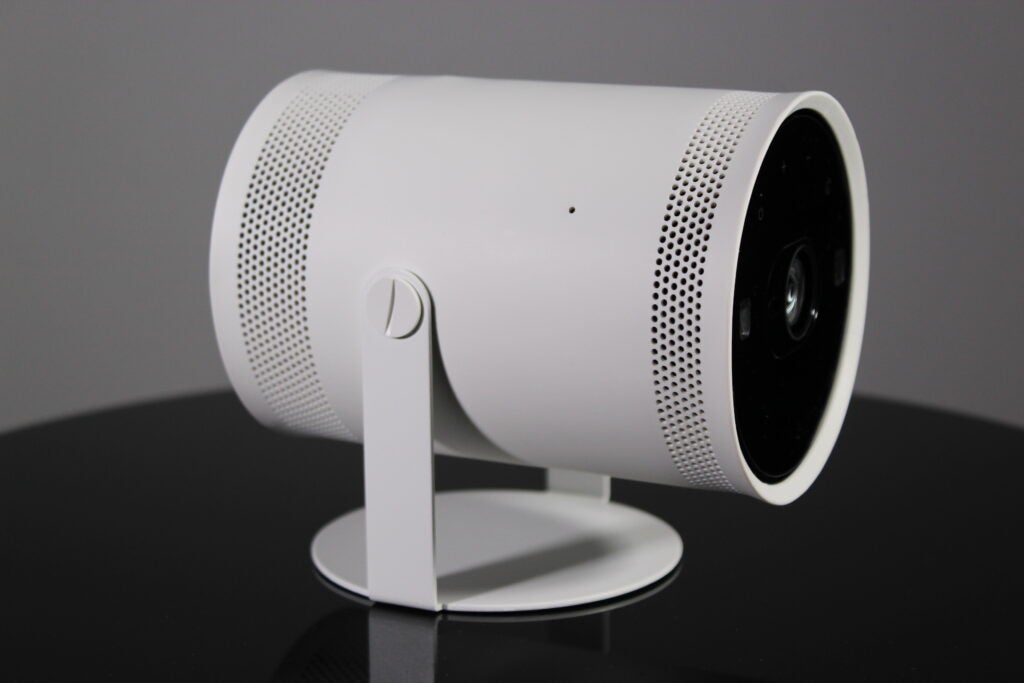
Samsung Freestyle
Best portable projector
Pros
- Easy-to-setup big screen images
- Surprisingly good sound
- Built-in streaming apps
Cons
- Limited to Full HD resolution
- Colour gamut could be wider
The Freestyle’s cylindrical shape and stand allow it to be easily carried to and fro, with the adjustable stand able to be angled from 90 to 180 degrees, along with an image size that can stretch from 30- to 100-inches. That helps to make the Freestyle a versatile, easy to set-up and accommodating projector.
Our reviewer found the chassis felt rather robust, so it could survive a few knocks, and controls are kept simple and accessible with touch sensitive buttons for power, casting and volume, as well as a switch for activating the microphone.
Connectivity here is also kept nice and simple with a Micro HDMI port that supports HDR signals and eARC for connecting a Dolby Atmos soundbar. The USB-C port is only for connecting the Freestyle’s power adaptor. For wireless connections there’s Wi-Fi, Bluetooth 5.2 and Apple AirPlay 2 that offer a range of ways to connect mobile devices to the Freestyle. Wi-Fi support also allows Samsung’s Tizen smart interface with access to apps such as Netflix and Disney+, plus there is Bixby and Amazon Alexa for voice assistants.
During testing, we found the picture to very good with a clean and detailed performance and punchy HDR colours when called upon. The 500 lumens of brightness it has at its disposal is fine, but not as bright as either XGIMI Elfin or Philips PicoPix MaxTV, both of which get close to 1000 nits for a brighter picture.
We measured input lag for gaming at 44ms, and while that’s fine for a projector it wouldn’t appeal to those in need of a faster performance. We also measured noise level at 25dB at a distance of 2ft, making for a quiet enough experience when in operation. The built-in speakers sound good for such a small projector, the size of the sound is extended beyond the casing for a bigger sound than was initially expected.
Samsung has announced a follow-up to the Freestyle that’s due to launch in 2023, but there’s no word yet on price or when it’ll be available. We do know it has new features such as a 21:9 screen ratio and support for Samsung’s Gaming Hub, which includes Xbox Game Pass.
Reviewer: Steve Withers
Full Review: Samsung Freestyle
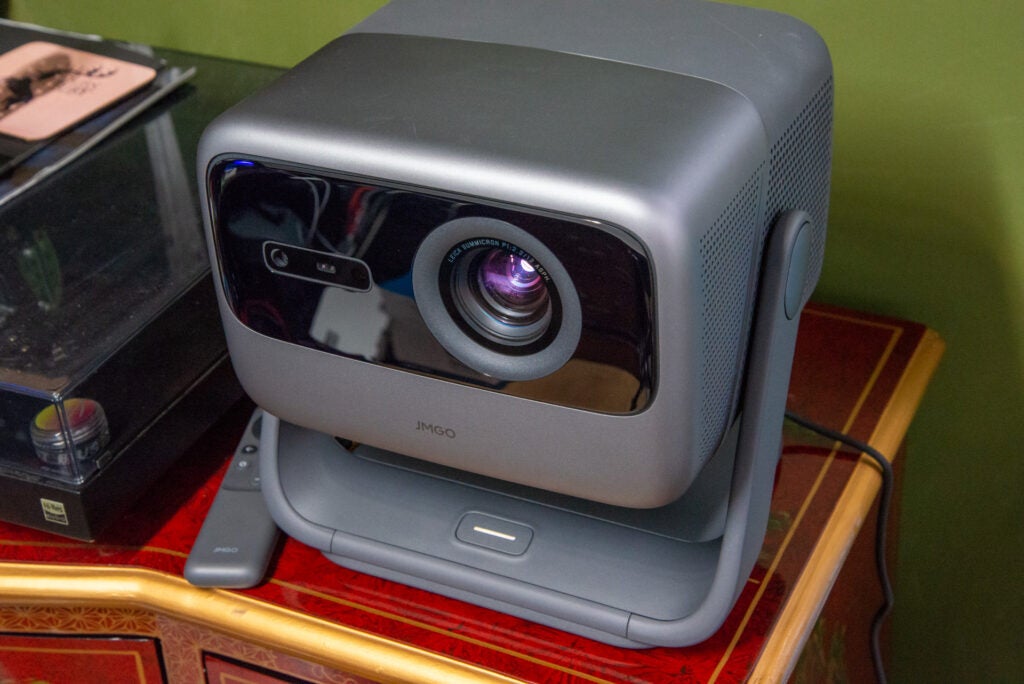
JMGO N1 Ultra
Best premium portable projector
Pros
- Extremely bright
- Excellent image quality
- Flexible stand
Cons
- Stand doesn’t have a tripod mount
- No native Netflix
By now we’ve been used to portable projectors having to comprise their performance with a low-resolution picture quality, but the JMGO N1 Ultra is a 4K pico projector that can comfortable straddle the worlds of portable projector and a high quality experience.
The design features a built in gimbal that allowed our reviewer plenty of flexibility in terms of where to point the projector, whether that was at a screen, wall or ceiling. More importantly when positioned it stayed in the same position and didn’t drop.
Set-up is a lot more straightforward that other portable projectors we’ve tested, with its Autofocus and horizontal keystone correction helping to make getting a square picture easy enough, though we would have liked a tripod mount for an extra degree of flexibility. Don’t discard the original packaging as that can be used to transport the JMGO about.
It features two HDMI 2.1 inputs, one of which is eARC to connect to a soundbar, where it can pass through Dolby Atmos audio at its highest quality. With its Android TV integration there’s also support for Google Assistant and plenty of streaming apps such as Disney+, BT Sport and Apple TV+, though Netflix is noticeable by its absence.
With a rated brightness of 4000 lumens, the JMGO is bright enough to get a reasonably sized image up on the wall during the day. However, we still found that closing the blinds/curtains is needed to get an even bigger image on screen.
And though the N1 Ultra doesn’t strictly output at 4K resolution, we found it eked plenty of detail, sharpness and clarity from what we watched in 4K, with its HDR10 support delivering bright images when viewing Black Panther: Wakanda Forever. Black levels can verge towards grey, but perfect blacks are rare in the projector world unless you’re spending a lot of money.
The dual 10W speakers can also deliver a big, loud sound whether the N1 Ultra is being used in the home or outside. There’s enough detail to hear what’s said, though we found bass to be clumsily handled. Nevertheless, the eARC means you can add a Dolby Atmos soundbar to get the most out of the set-up.
Reviewer: David Ludlow
Full Review: JMGO N1 Ultra
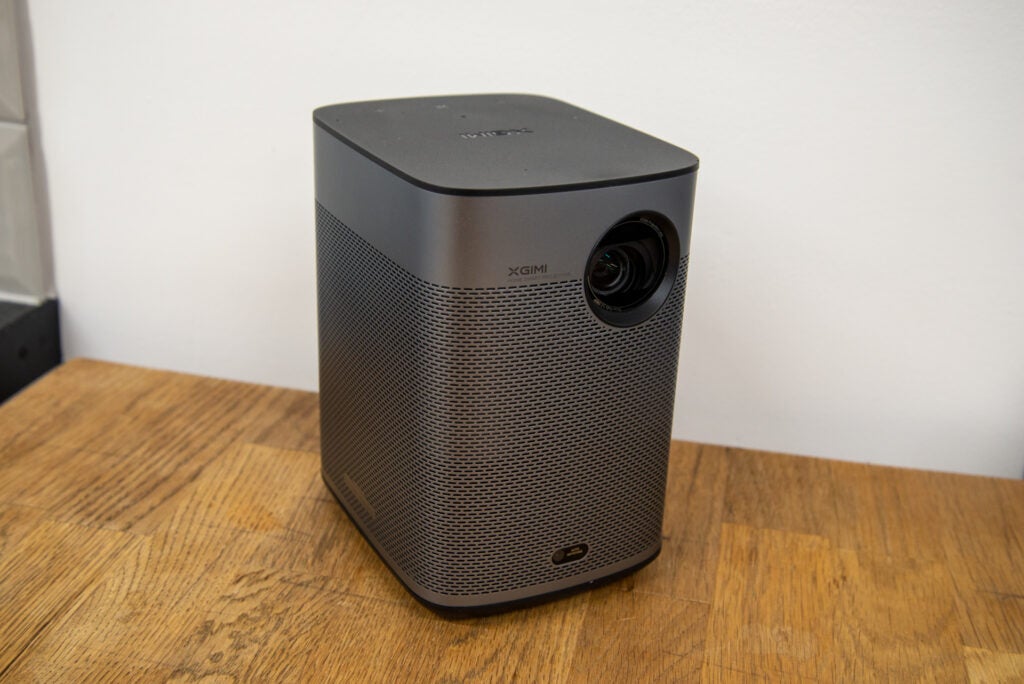
XGIMI Halo+
Best Android portable projector
Pros
- Bright
- Clever automatic setup
- Clear image
- Decent audio
Cons
- Expensive
- No native Netflix
Compare the XGIMI Halo+ to the original Halo and the brightness has been upped to 900 lumens from 800, making it a brighter alternative to the Samsung Freestyle. While the boost in brightness is not massive, it does help when using it in darker rooms.
Image size can go as far as 200-inches, though we found half that size to be more than adequate. The XGIMI supports resolutions up to Full HD, and we found it produced bright images with vibrant and rich colours, especially when dealing with brighter content. Contrast is generally good, although blacks do veer to grey and it can be difficult to get a sense of detail in darker scenes – the addition of HDR10+ helps by revealing more detail.
Boasting dual 5W Harman Kardon speakers, we found the audio quality was decent with good volume and clarity. The lack of bass puts a spanner in offering a true cinematic experience but for casual viewers it’s a solid performance. Battery life we found to be around two hours when unplugged from the mains, which means average length films should be fine but the Halo+ will likely struggle with epic runtimes. The XGIMI’s LED lamp is claimed to last up to 30,000 hours, which is around ten years of use if the XGIMI were used for eight hours a day.
For a portable projector, there’s convenience in the form of an automatic procedure that optimises the picture when the Halo+ is moved, meaning you won’t have to worry about fiddling with the image each time. Android TV is supported with its convenient and intuitive layout, and although there’s access to Google Play Store library we found that Netflix wasn’t supported for this projector an apps such as NOW aren’t available. consider adding a Fire TV Stick or have a look at Freestyle, which has more supported apps.
In terms of its size the Halo+ can fit into a bag or suitcase, but is pushing at the threshold of portability considering it lacks a handle like the Anker Nebula Capsule Max. There is a room for positioning the projector, as it can be placed on a flat surface, used with its integrated kickstand to angle the projector up, or propped on a tripod mount.
Reviewer: David Ludlow
Full Review: XGIMI Halo+
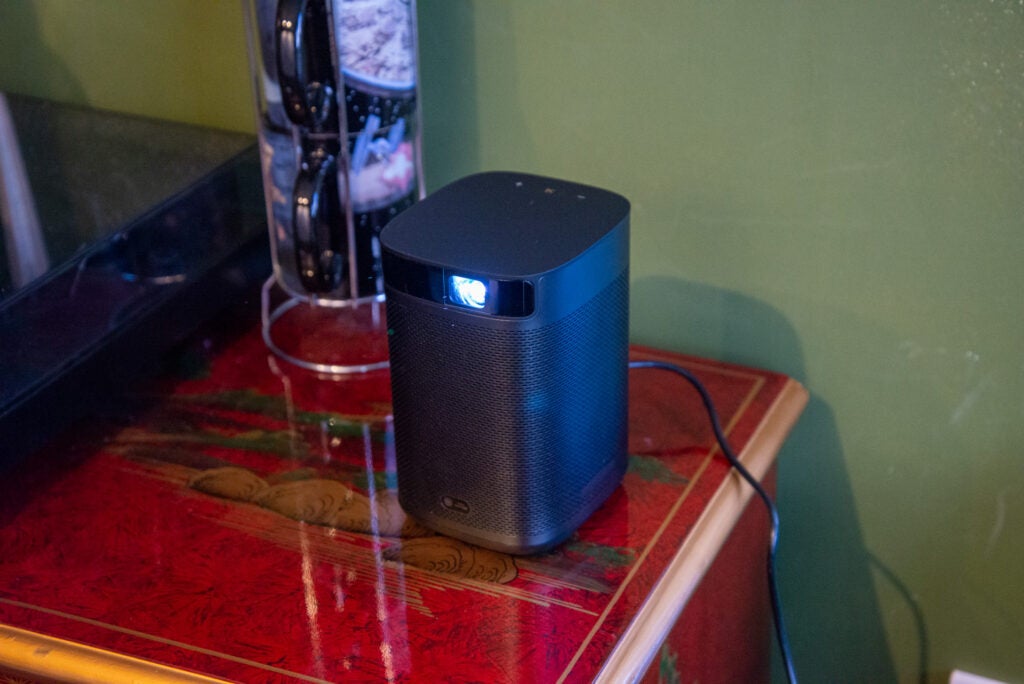
XGIMI Mogo Pro+
Best ultra-compact Android projector
Pros
- Very small
- Decent audio
- Clever auto setup
Cons
- Not that bright
- Built-in Netflix client doesn’t work
If the Halo+ isn’t small enough then XGIMI has an ultra-compact projector in the form of the Mogo Pro+ that may suit better.
It looks similar to its big brother, the XGIMI Halo+, but weighing at just 0.9kg, the Mogo Pro+ fits more comfortably into the portable projector category than the Halo+ does, with its similar size to the Anker Nebula Capsule Max.
There is an integrated kickstand to angle the projector up, or prop on a tripod mount. On its rear is a USB port, a single HDMI ARC input, and a 3.5mm audio output; with Bluetooth built in, too, so audio can be streamed to a supported speaker, or the projector itself could be used as Bluetooth speaker.
Like the rest of XGIMI’s projectors, the Mogo Pro+ runs Android natively with access to pretty much all the apps in the Google Play Store, though we found that while Netflix is certified to run on the XGIMI, it doesn’t actually work.
On the features front, there is auto keystone correction and autofocus. Simply put the projector down roughly square on to a screen or white wall, and it will automatically adjust to give you a square image that’s in focus. It’s a piece of technology we found particularly useful setting the projector up, especially for a device that could be used in multiple places.
In terms of brightness it’s slightly better than the Nebula model on this list with 300 lumens, but that’s still not particularly bright and requires a dark room to get the best performance from it. With a 1.2:1 throw ratio, it’s enough for a 60-inch screen at 1.59m distance, or an 80-inch screen at 2.13m. We found it wasn’t too hard to get a screen size that felt cinematic without having to place the projector too far back.
There’s no HDR support for the Mogo Pro+ but our reviewer still found the image quality to be of good quality, making the best of the bright content we fed it. With darker content the projector can veer towards blacks that come across a grey, while detail is lost in the darkest parts of the image. These were minor complaints given the quality of what we were seeing for a pico projector.
The sound impresses for its size too, the Harman Kardon system lacks bass to have proper impact but it’s loud and clear, and of similar quality to a TV screen.
Reviewer: David Ludlow
Full Review: XGIMI Mogo Pro+
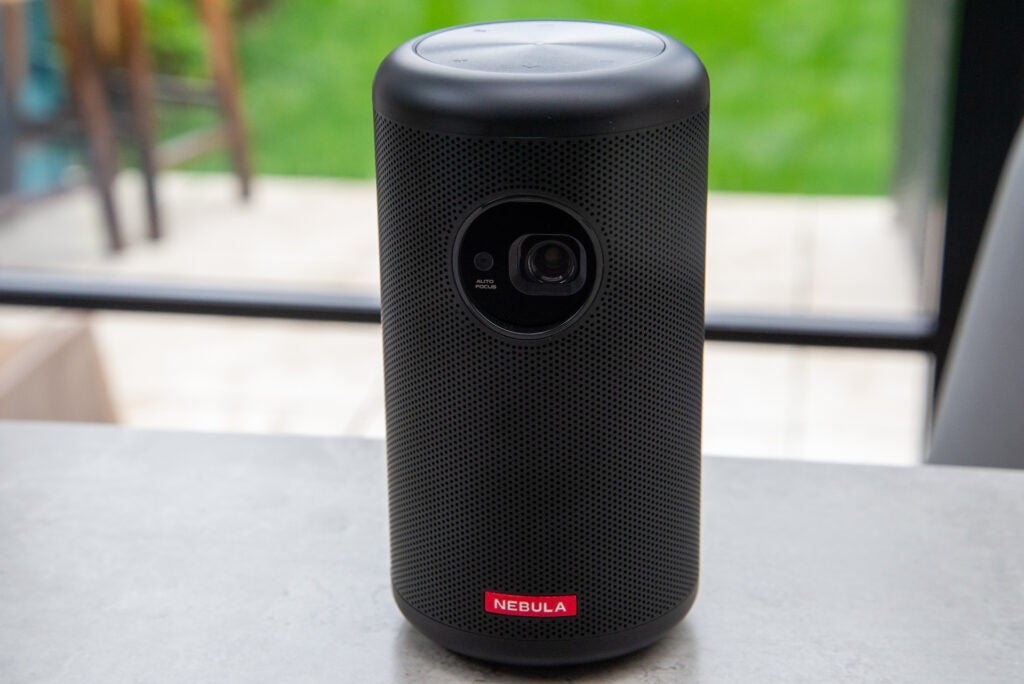
Anker Nebula Capsule Max
Best portable projector under £500
Pros
- HD resolution
- Great build quality
- Good battery life
- Nice app
- Android built-in
Cons
- Not very bright
- No Google Play Store
- No lens protector
By the standards of portable projectors, the Anker Nebula Capsule Max is tiny. At 15cm tall, with a diameter of 80mm, it’s smaller than a good proportion of Bluetooth speakers. Its weight of 737g means it’s lighter than most portable projectors, making it easy to carry around or stash in a bag.
Control are kept simple on the device itself with buttons for volume, cursor keys, select and back that are handy for quickly pausing or changing something but both the remote control and Nebula Connect app offer more extensive means of operation. Around the back of the unit is a port for power, 3.5mm audio output, a USB port for connecting external storage and an HDMI port. The Anker runs on Android 8.1 which allows access to a good set of apps, with the likes of Netflix and Prime Video, although at the time of review there was no Disney+.
The Capsule Max can automatically adjust its focus and keystone to make optimising the image much simpler and convenient for those who a desire a no-fuss experience. While we didn’t measure the fan noise, it was noticeable even when we weren’t watching anything. There’s a built-in battery for portable use, able to run for 90 minutes on full brightness or 4 hours when brightness is reduced.
Sticking with the theme of brightness, the quoted 200 lumens is okay for general viewing and we found we could only go the 100-inch screen size when it was dark to get the best from its picture performance. Contrast is fine, though like the Halo+, blacks erred towards grey. Colours proved to be reasonably accurate with decent vibrancy, and sharpness and resolution (720p) was a step up on the original Nebula Capsule for a more detailed image.
With an 8W speaker, the Anker provided good volume and surprisingly meaty bass. Provided the room you’re watching is quiet, it’s a decent performance, but the 3.5mm audio jack there’s the option of adding an external sound system for a better, louder experience.
Reviewer: David Ludlow
Full Review: Anker Nebula Capsule Max
We also considered…
We’ve reviewed
See all reviewsFAQs
Yes they are! Especially if you don’t have much space for a more dedicated installation, then a pico projector can work its magic by offering more flexibility in terms of placement. They’re not as good as dedicated projectors, but are fine, affordable efforts for more casual viewing.



